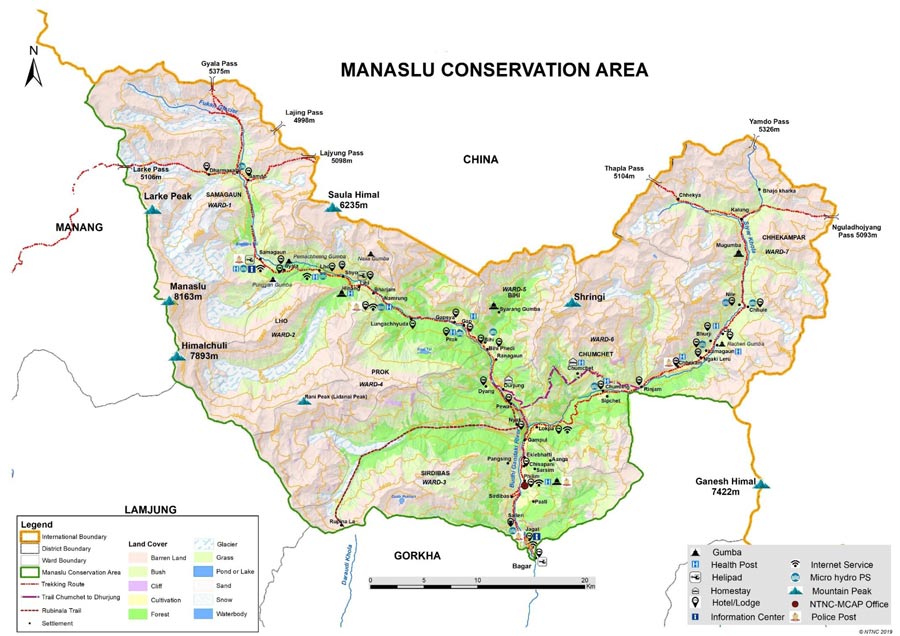Culture centred stewardship of the Tsumba people in the Western Himalaya, Nepal
This case study was created by Jailab Kumar Rai and Nima Lama for the ICCA Consortium’s Territories of Life Report 2021.
The report underscores Indigenous Peoples’ and local communities’ rights as the biggest opportunity to address biodiversity and climate crises.

54,417 hectares

Custodians: 1,810 Tsumba Indigenous peoples
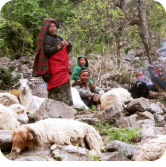
Photo: Christian Chatelain
“We feel proud to have been born and grown up in such a historically valuable place of the world where nature-culture conservation is sustaining through beliefs and practices based on the culture of non-violence or locally called Shyagya tradition.”
MR. NIMA LAMA
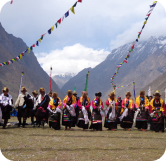
Photo: Madhu Chettri
“We are living here with all the wild animals and birds as members of the same family.”
NIMA LAMA
Tsum Valley is four days’ walking distance from the nearest road, one of the most remote areas in the Western Himalaya of Nepal. Tsum Valley is the traditional homeland of the Tsumba Indigenous peoples, who speak a unique Tsumke or Tsumba, a dialect influenced by Tibetan language. The Valley was declared by its inhabitants as “Shyagya”, a non-violent area, in 1920. The Shyagya, a culture of non-violence rooted in Buddhist religion, is the main guiding principle that shapes daily lives of Tsumba. Regular visits to the Gumbas (Buddhist monasteries), offering prayers and celebration of different religious and cultural festivals, reaffirms the spirituality. Monasteries, including Mani Bompos, Mani Walls, Kanis, and Chortens, are important cultural heritage sites that forge spiritual connections with the Tsumba territory (Rai and Thing 2020).
For the Tsumba, mountains surrounding Tsum Valley are abodes of gods, and the Buddhist saint Milarepa is believed to meditate in the caves. The valley is considered a beyul (a sacred hidden valley refuge for followers), created by the 8th century Guru Rinpoche, who introduced Buddhism in Nepal, and is considered a sacred natural site (Rai et al. 2016; Rai and Thing 2020).
A diverse natural environment
Located in Manaslu Conservation Area, the valley extends 54,417 hectares (544 km2),[1] is surrounded by majestic Himalayan peaks, and lies between altitudes of 1600 and 6705 metres above sea level (NTNC 2020, Rai & Lama 2020, ICIMOD 2008). It is a respected Buddhist cultural heritage site, attracting pilgrims and tourists alike. The valley provides excellent habitat for wild animals, particularly blue sheep, musk deer, Himalayan thar and snow leopard, with approximately 2,000 species of plants (50 medicinal plants), 110 species of birds, and 33 species of mammals. A diverse natural environment, it hosts 11 different types of forests (ICIMOD 2008, 15).
The Tsum Valley is divided into Chumchet and Chekampar villages, known as Lower Tsum and Upper Tsum, respectively, across the Budhigandaki-Shiarkhola River. The 33 settlement clusters, with 1,810 people among 529 households, sit between altitudes of 1905 and 3100 metres above sea level (GoN/NPC/CBS 2012, 56).
A number of traditional arts and crafts, such as Thanka paintings (special paintings in cloths and woods), stone carving (Mani) made mainly by males, traditional woven clothing (such as bakhu, dhoja) and carpets (known as galaicha), are relevant to their cultural identity.
While some Tsumba are employed by government and non-government agencies, there are other forms of income for livelihoods. Major subsistence crops grown in the valley are wheat, bouquet, mustard, beans, potato and vegetables in the Upper Tsum, and wheat, maize, millet, buckwheat, beans and vegetables in the Lower-Tsum. Animal husbandry, primarily for agricultural and milk products used for self-consumption, is another source of livelihoods. The Tsumba also derive income from the collection and supply of Yarcha Gumba (Codycepts sinensi) from May to July, and of wild garlic during September and October (ICIMOD 2008, Rai and Thing 2020).
Tourism is another source of income. Tsum Valley is a gateway to the Tibet province of neighbouring China, with the Tibetan border about 15 km from the highest Niley village. For political reasons due to Khampa’s movement for the demand of autonomous Tibet, Tsum Valley remained restricted to foreigners from 1975 until 2008 (Mainali 2014). After continuous lobbying by community leaders between 1991 and 2008, it was opened for tourism. Since then, the number of tourists visiting Tsum Valley has gradually increased.[2] Foreigners require two Nepalese permits: one is for entry to the Manaslu Conservation Area and the other is a special permit to enter Tsum Valley. Tourism infrastructure includes 40 hotels, lodges, retail shops, trekking agencies and tourist guides that host visitors to the Tsum valley. The Tsumba have a collective decision to forbid outsiders to buy the lands and operate any businesses in the valley. However, in 2020, only 27 tourists visited the valley (NTNC/NCA 2021). This dramatic decrease is due to the global COVID-19 pandemic.
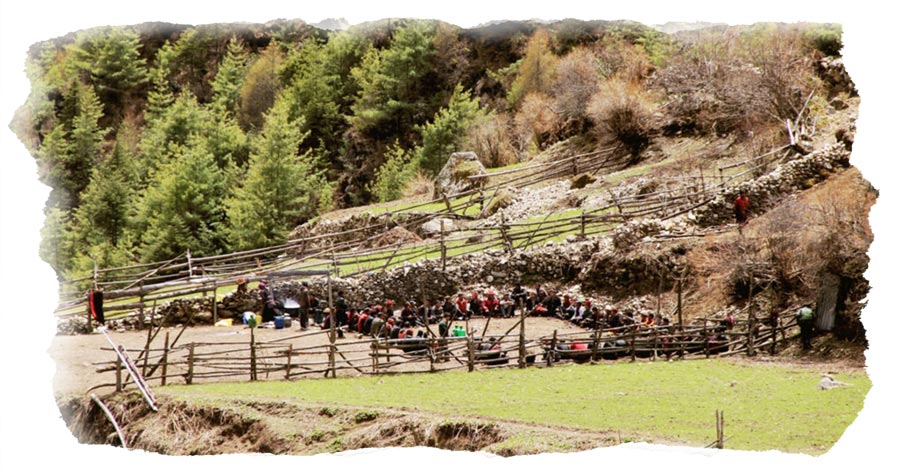 Photo by Christian Chatelain
Photo by Christian Chatelain
Traditional doctors known as Amchi, with knowledge and wisdom about the use of herbal medicines, also play important roles in the lives of Tsumba (Sherpa et al. 2019) given the inadequate health infrastructure and services. The village Amchi, who have exclusive rights over collection and distribution of herbal medicines in the valley, are entrusted to ensure their sustainable use and ensure three types of Amchi persist: (1) ones with specialised knowledge about medication for domestic animals; (2) those who undertake general medication for villagers; and (3) those who offer treatment for poisons.[3]
Likewise, Lama (spiritual leaders) play important roles in preserving cultural practices and spirituality. They teach religious norms, values and spirituality to the Tsumba through religious rituals and cultural celebrations (Rai et al. 2016). The Lama are respected people in the valley. Becoming a monk or nun is a highly respected choice of religious life. Laprang, the local Lama, performs life cycle and village rituals. The Lama in Gumba Monastery, also known as Autari-Lama (Lama having rebirth), performs major religious celebrations and offers teaching and preaching of religious philosophies and spirituality.
Two modern community-based organisations, Tsum Welfare Committee and Tsum Shyagya Conservation Committee, were legally formed in 2006 and 2018 under the leadership of Nima Lama. They provide institutional platforms for community development, preservation of culture, religion, and identity of Tsumba, organisation of Shyagya festivals, promotion of the culture and practice of non-violence beyond the valley, and establishment of relationships with government, political leaders and conservation agencies.
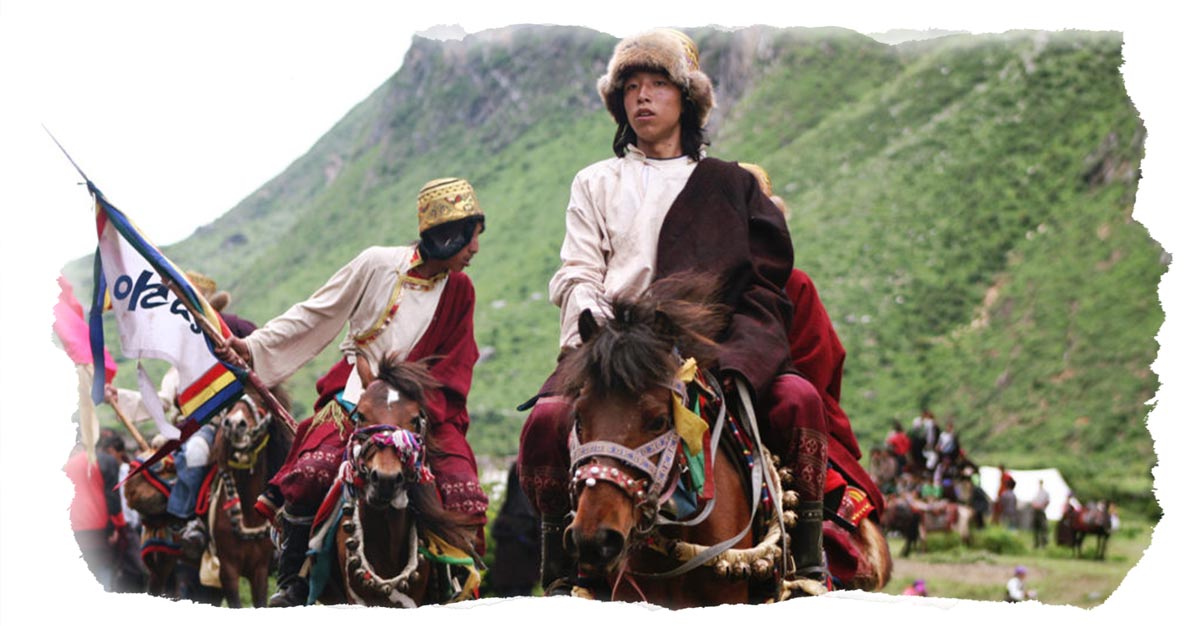 Photo by Lopsang Chiring Lama
Photo by Lopsang Chiring Lama
In 1998, the entire Tsum Valley was subsumed by the Manaslu Conservation Area under the jurisdiction of the Department of National Parks and Wildlife Conservation. The management of this Area is entrusted to the National Trust for Nature Conservation, a conservation agency constituted by a special law in Nepal. The National Trust, through the Manaslu Conservation Area Project, has established local people’s committees (7 Conservation Area Management Committees in total) in the Area, including in Tsum Valley (NTNC 2020b). As part of Conservation Area Management Committees, the Tsumba are also organised into a women’s group, farmer groups and youth groups. Conservation and community development activities such as livelihood improvements in Tsum Valley are planned and carried out by two Conservation Area Management Committees (NTNC 2020a, 2020b). Similarly, local government institutions and other institutions of health, education and security carry out social and development activities. Modern and state institutions are gradually replacing Tsumba customary institutions (Rai et al. 2016).
- Not to kill any animals;
- not to hunt;
- not to collect honey;
- not to sell animals to butchers;
- not to trap animals/birds;
- not to trade meat; and
- not to burn forests.
Growth of rare tree species, especially at high altitude and a cold climate, is very slow. Thus, the declaration note is vital for conservation of nature and living beings in Tsum Valley. Through cultural rituals and celebrations over time, the Tsumba have sustained collective commitments to the declaration note. In 1939, the Lamas from all the Gombas in the Valley and the locals gathered during Saka-Dawa, a special event to celebrate Buddha’s birth, and expressed commitment to the declaration note. It was again reaffirmed during cultural events in 1965, 1970, 1972 and 1998. Cultural events and festivities such as Loshar, Nara, Dhachyang and Shyagya, and different prayers (Saka-Dawa, Lwahwaaf Tuechyen, Yaarney, Lahkhang, Mani Tyungyur, Dukpa Chhesi and Farning) forge community solidarities and sustain nature-culture conservation (ICIMOD 2008; Rai et al. 2016, Rai and Thing 2020).
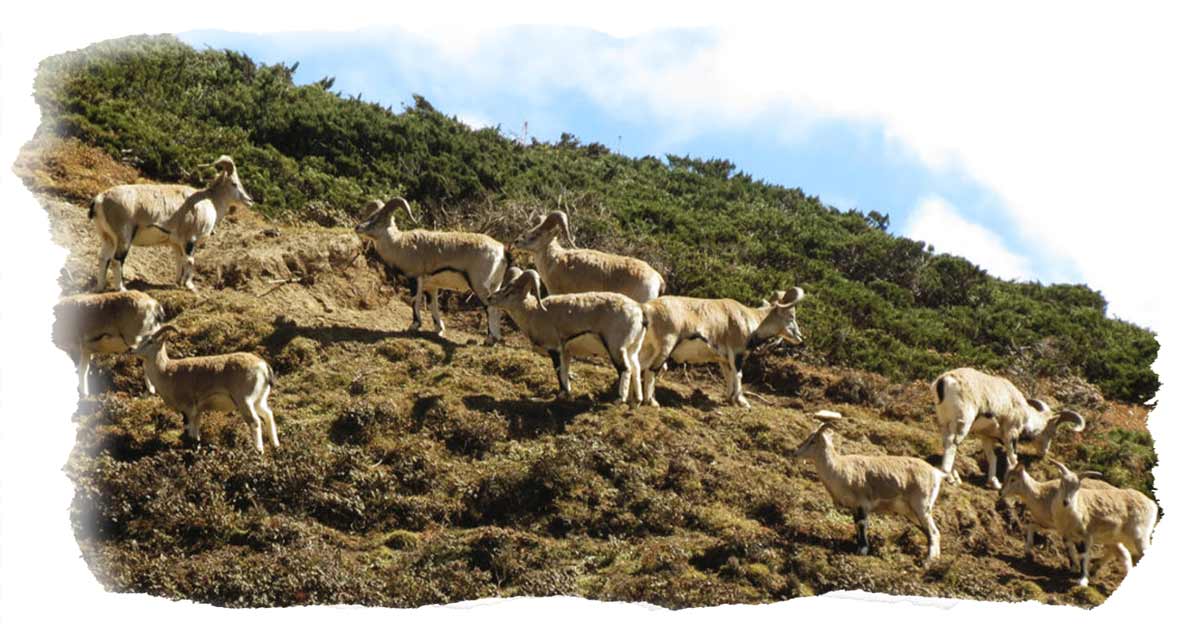
Photo by Madhu Chettri
Leadership of Lamas is also critical. For instance, the leadership of Kyabje Drukpa Rinpoche (Ngawang Khanrap) since 1965 is very important for his teachings of Shyagya tradition and philosophies during cultural festivals. The Tsumba revere him as the main patron of the Shyagya tradition. Similarly, three Labrang Lamas from three villages in Upper Tsum (Niley, Ngak and Khangsar), a Lama in Muu Gumba, and a Lama in Rachen Gumba are other respected patrons of Shyagya tradition. Community leader Nima Lama, from Upper Tsum, is another patron for his lifetime dedication to the valley.
The Upper Tsum was demarcated with four boundaries and self-declared as non-violent in 2008 when Nima Lama was the Chair of the local government. It was a symbolic claim and a commitment for non-violence in the Tsumba territory. Since then, the Tsumba leaders have developed consensus with government officials deployed in the valley to respect and comply with non-violent culture as the local community bylaws.
The first and second Shyagya festivals of Tsumba in 2009 and 2012 included cultural activities such as dances, songs, music and traditional games and sports in addition to preaching from Lamas. These events also served to sensitise non-Tsumba people and government officials. During the 2012 festival, Tsumba from Lower-Tsum also self-declared Lower-Tsum as a non-violent area and committed to the declaration note of non-violence followed by voluntary handover of 58 illegal guns to the government authority (Rai et al. 2016, Rai and Thing 2020).[4]
These cultural festivals not only sustain Tsumba cultural values, beliefs and practices of nature-culture conservation, but also transmit them to new generations. Biocultural conservation and practices of non-violence thrive in the Tsumba territory of life due to the persistent collective actions of Tsumba and their leaders. As Nima Lama acknowledges, “We are living here with all the wild animals and birds as members of the same family.”
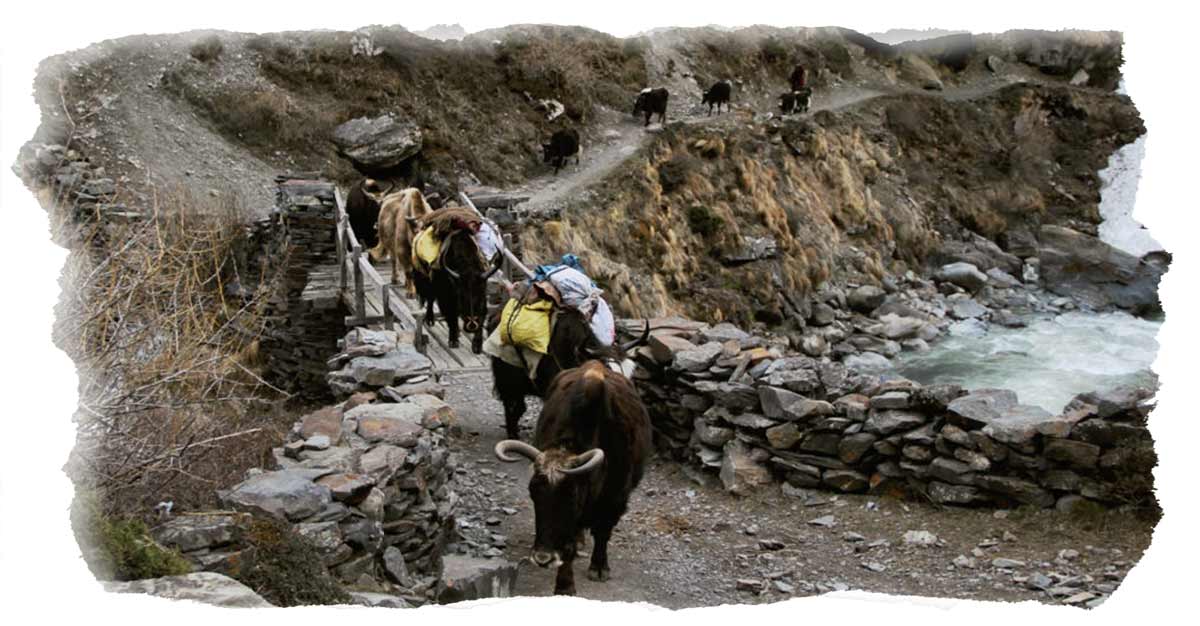
Photo by Christian Chatelain
The third main threat to the Tsum territory is increasing tourism requiring growth of hotels, lodges, shops and retail shops. Increased import of goods in the valley are driving over-population and triggering environmental degradation, pollution, threats to wildlife, and fuelwood consumption by lodges. This is mitigated by rules forbidding outsiders from operating hotels, lodges and retail shops in the valley as well as increased use of liquid petroleum gas.
The fourth threat is rapid out-migration to cities for education and job opportunities, especially among youth. This has resulted in gradual loss of tangible cultural heritage such as costumes, foods, handicrafts, songs, and dances, as well as intangible elements such as values and beliefs alongside the Tsumba language. Schools in Tsum Valley[5] provide education only up to grade five, and there are concerns that youth living alone away from families are at risk of losing their culture.
Lastly, local livelihoods and natural environments are impacted by climate breakdown-induced natural disasters and extreme weather events such as heavy snowfalls, avalanches, no snowfall or less snowfall, decreased length of snow-ice deposits in the farmland and terraces, and decreasing layers of snow in the mountains. Reduction of grasses in open terraces has increased crop raids by musk deer and deer in the valley during the dry season. Pests in farmlands have increased and seasonal harvesting of Yarcha Gumba, a caterpillar fungus (Cordyceps sinensis) and major livelihood for Tsumba, has reduced.

Photo by Madhu Chettri
This case study was created by Jailab Kumar Rai and Nima Lama for the ICCA Consortium’s Territories of Life Report 2021.
The report underscores Indigenous Peoples’ and local communities’ rights as the biggest opportunity to address biodiversity and climate crises.
All references and sources are available in the original case study.
Header photo by Lopsang Chiring Lama.
Learn about the nature-culture stewardship of the Tsumba people in the Western Himalaya, Nepal.

